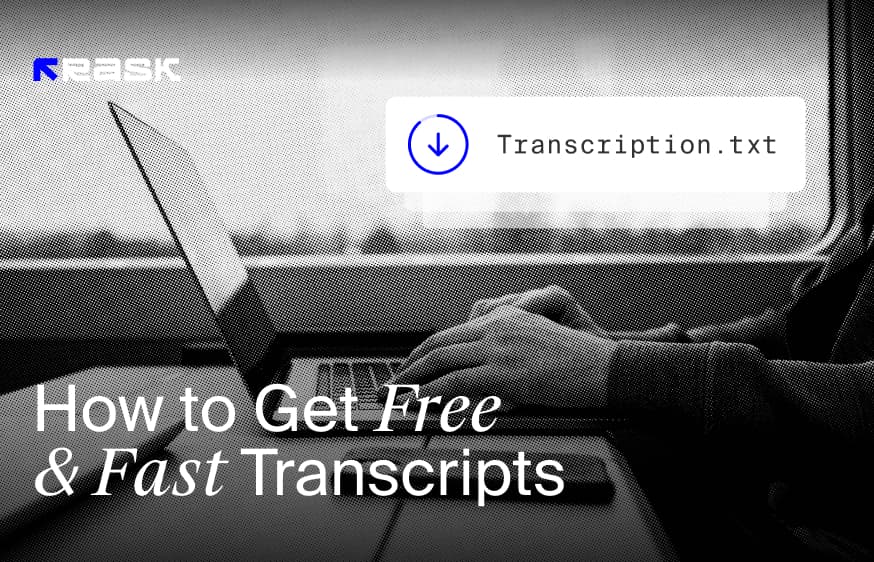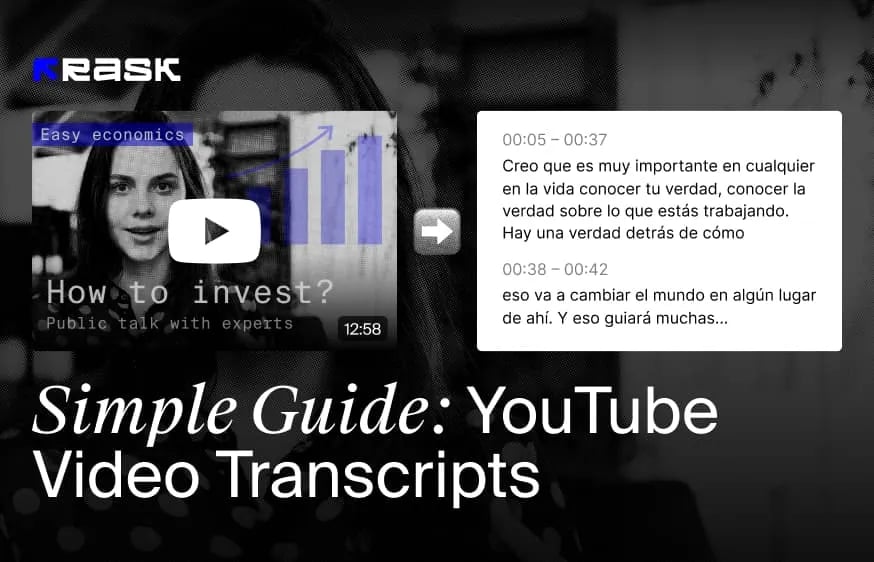Audio ke Teks dalam Sekejap: Panduan Secepat Kilat untuk Transkripsi Instan
Apa yang ada di dalamnya
Transkripsi audio baru-baru ini menjadi alat yang sangat diperlukan untuk berbagai macam kreator dan domain. Apakah Anda menjalankan bisnis dan perlu menggunakan kembali konten atau Anda seorang jurnalis yang melakukan wawancara, kebutuhan akan layanan transkripsi audio yang cepat, akurat, dan hemat biaya sekarang jauh lebih tinggi daripada sebelumnya.
Salah satu alasan utama mengapa transkripsi audio ke teks semakin populer adalah karena komunikasi manusia terus berkembang. Apa pun jenis komunikasi yang Anda sukai, sebagian besar bentuknya melibatkan simbol yang dapat kita lihat, suara yang dapat kita dengar, atau keduanya. Dan setiap bentuk memiliki manfaat dan keterbatasan. Tetapi era digital modern kita masih didorong oleh pesan visual.
Dengan kehadiran Internet, konten visual dapat dengan mudah dibagikan dan dilihat oleh miliaran orang di seluruh dunia. Seperti yang Anda lihat, ada potensi besar dalam menciptakan dialog yang segar dan multiguna yang diekstrak dari rekaman audio.
Ini disebut "transkripsi audio" - proses mengubah konten audio dan video menjadi file teks. Kami membuat panduan ini untuk membantu Anda mempelajari lebih lanjut tentang transkripsi, manfaatnya, kasus penggunaan, dan teknologi yang tersedia untuk memfasilitasi proses tersebut.
Mari kita masuk ke dalamnya!
Apa yang dimaksud dengan Transkripsi Audio ke Teks?
Karena transkripsi teks audio adalah proses yang relatif baru yang sering kali didukung oleh AI, sebagian besar kreator masih menganggap istilah ini membingungkan. Transkripsi biasanya dikacaukan dengan kata-kata yang terdengar mirip, seperti 'terjemahan' dan 'menyalin'.
Meskipun ketiga istilah ini saling berkaitan erat, 'terjemahan', 'penyalinan', dan 'transkripsi' memiliki arti yang berbeda yang harus diperjelas sebelum kita melanjutkan.
- Penerjemahan berarti mengungkapkan makna teks dalam bahasa lain;
- Mentranskripsikan berarti menulis salinan file teks;
- Transkripsi adalah versi tertulis dari file audio.
6 Manfaat Transkripsi Teks Audio
Menghemat Waktu
Bayangkan sebuah dunia di mana Anda mengetikkan setiap pertanyaan di Google, dan satu-satunya hasil pencarian yang tersedia adalah dalam bentuk video dan audio. Jadi, alih-alih 30 detik yang biasa Anda habiskan untuk menemukan jawabannya, Anda harus menghabiskan setidaknya 5 menit untuk menonton video atau mendengarkan file audio yang mungkin tidak sepenuhnya menjawab pertanyaan Anda.
Itulah sebabnya mengapa bisnis memilih untuk mentranskripsikan file audio. Transkripsi memungkinkan pengguna untuk mencari apa yang mereka cari dengan cepat, membuat pencarian menjadi mudah dan informatif.
Meningkatkan Hasil SEO
Manfaat lain dari transkripsi adalah peningkatan hasil SEO. Transkripsi podcast untuk menambahkan subtitle atau teks ke dalam video memungkinkan mesin pencari untuk memahami isi konten, sehingga membantu menempatkannya lebih tinggi dalam hasil pencarian.
Meskipun konten video selalu mengalahkan teks di media sosial dan di toko e-commerce online, mesin pencari hanya merespons konten tertulis. Oleh karena itu, transkripsi membantu mesin pencari mengidentifikasi konten video dan audio Anda, mencari tahu tentang apa konten tersebut, dan memberikan tanggapan yang relevan terhadap permintaan pengguna - memungkinkan bisnis Anda tumbuh dalam lalu lintas organik dengan lebih mudah.
Memungkinkan untuk Menggunakan Kembali Konten
Kemampuan untuk mengubah konten audio dengan cepat menjadi file txt memungkinkan kreator untuk mempercepat proses pembuatan konten. Misalnya, podcast dapat diubah menjadi postingan blog atau postingan media sosial. Mentranskripsikan file audio menjadi teks memungkinkan penggunaan ulang konten, membuat konten dapat diakses oleh semua pengguna dan menyederhanakan pembuatannya.
Memperjelas Makna Konten
Alasan lain bagi bisnis untuk mentranskripsi file audio adalah membantu memperjelas makna kata-kata yang diucapkan. Di hampir semua rekaman video atau audio, kita dapat mendengar banyak sekali "kata-kata pengisi" seperti "ums" dan "uhs". Jujur saja: tidak ada orang yang bisa mengekspresikan diri mereka dengan sempurna sejak percobaan pertama - terutama jika menyangkut podcast, wawancara, atau video streaming langsung.
Jauh lebih mudah untuk memahami sepenuhnya makna dialog yang diucapkan ketika kita berbicara secara langsung. Namun, gambarannya sangat berbeda ketika kita hanya menggunakan audio atau video yang belum diedit. Jadi, ide utama dari dialog mungkin akan hilang.
Di situlah transkripsi rekaman audio berperan penting. Hal ini membantu untuk memastikan bahwa intinya sejelas mungkin. Selain itu, dalam kasus-kasus di mana ide utama lebih penting daripada 100% sesuai dengan aslinya - transkripsi yang didukung oleh AI yang cerdas adalah cara yang tepat. Ini membantu menjernihkan segala sesuatunya dengan menghapus semua kata pengisi dan gangguan lainnya dengan cepat.
Meningkatkan Aksesibilitas
Perusahaan dan kreator sering kali mentranskripsikan audio untuk meningkatkan aksesibilitas konten mereka. Banyak orang yang mengalami kesulitan dalam mendengarkan audio dan menonton video, misalnya pengguna dengan gangguan pendengaran. Oleh karena itu, transkripsi digunakan untuk membuat file subtitle dan teks tertutup agar konten video dan audio dapat diakses oleh semua orang.
Merampingkan Komunikasi
Mengingat banyaknya rapat online, webinar, dan sesi pelatihan digital yang dilakukan oleh setiap perusahaan yang menggunakan sistem kerja jarak jauh, tidak mengherankan jika ada beberapa informasi yang tidak tersampaikan. Sebaliknya, transkripsi memungkinkan adanya dokumen nyata yang memberikan nilai lebih lama setelah rapat online. Sementara beberapa konten yang ditranskrip nantinya dapat digunakan untuk mengedukasi karyawan baru, jenis lainnya dapat digunakan untuk tujuan pemasaran atau penjualan.
Tantangan Transkripsi Audio ke Teks
Meskipun transkripsi adalah pilihan yang bagus untuk sebagian besar bisnis saat ini, transkripsi masih merupakan teknologi baru yang memiliki keterbatasan dan tantangan. Berikut ini adalah beberapa di antaranya:
Transkripsi Manual Membutuhkan Waktu
Meskipun ada banyak pilihan untuk transkripsi otomatis dan bertenaga AI, sebagian orang masih lebih suka mentranskripsikan audio secara manual. Seperti yang Anda bayangkan, Anda akan menghabiskan waktu seharian hanya untuk menyalin audio dari video berdurasi dua jam.
Hasil yang Tidak Akurat
Ada juga masalah ketidakakuratan dalam beberapa kasus. Ada begitu banyak aplikasi yang tersedia saat ini sehingga mungkin sulit untuk menemukan aplikasi yang menawarkan akurasi dan kecepatan di satu tempat. Solusi perangkat lunak ucapan-ke-teks berbeda satu sama lain, jadi kami sarankan untuk memilih salah satu yang memiliki AI bawaan. Meskipun tidak semua alat teks-ke-ucapan berbasis AI akurat, mereka masih lebih baik daripada sekadar perangkat lunak otomatis yang mungkin salah mengeja dialek dan kata-kata yang rumit.
Apa Saja Cara Utama untuk Mentranskripsikan Audio ke Teks
Ada beberapa cara untuk mengonversi audio ke teks. Memilih opsi melibatkan pertimbangan kebutuhan spesifik Anda, seperti tujuan file Anda, audiens yang ingin Anda jangkau dengan konten baru, serta waktu dan anggaran yang tersedia.
Transkripsi Manual
Salah satu opsi yang paling populer meskipun memakan waktu adalah transkripsi manual. Artinya, Anda bertanggung jawab untuk menyalin audio Anda sendiri ke dalam file teks tanpa menggunakan alat atau perangkat lunak tambahan. Prosesnya melibatkan mendengarkan file audio atau video untuk mengikuti konvensi transkripsi standar dan kemudian mengetik semua yang telah Anda dengar.
Mentranskripsikan secara manual bisa menjadi pilihan yang baik bagi siapa saja yang memiliki anggaran yang terbatas atau tanpa anggaran. Hal ini juga memungkinkan akurasi yang lebih tinggi dan memungkinkan kreator mempelajari lebih lanjut tentang prosesnya sebelum beralih ke perangkat lunak apa pun untuk menyalin audio ke teks.
Perangkat Lunak Transkripsi Otomatis dan AI
Perangkat lunak transkripsi otomatis adalah pilihan bagus lainnya. Alat-alat ini biasanya dirancang dengan teknologi pengenalan suara yang canggih untuk menghasilkan transkrip berkualitas tinggi dengan cepat dari file audio atau video. Opsi ini sebagian besar digunakan untuk tujuan pendiktean.
Pilihan lainnya adalah alat transkripsi yang didukung oleh teknologi Machine Learning (ML), Natural Language Processing (NLP), dan Artificial Intelligence (AI).
Transkripsi otomatis memang cepat, meskipun dapat menyebabkan hasil yang tidak akurat. Itulah sebabnya mayoritas bisnis memilih alat bantu AI yang menawarkan kecepatan dan cenderung lebih akurat. Selain itu, Anda bisa menemukan alat bantu AI yang murah atau bahkan gratis.
Layanan Transkripsi Manusia
Terakhir, metode transkripsi yang populer adalah dengan mempekerjakan transkriptor manusia. Meskipun ini adalah opsi yang paling mahal, layanan transkripsi manusia memberikan hasil yang sangat akurat hampir sepanjang waktu. Namun, pastikan Anda memiliki cukup waktu karena manusia membutuhkan waktu berminggu-minggu atau berbulan-bulan untuk menyelesaikan proyek besar, sementara perangkat lunak AI seperti Rask AI dapat mentranskripsikan audio ke teks dalam hitungan menit dengan keakuratan yang sama.
Cara Mentranskripsikan Audio Menjadi Teks
Seperti yang telah kami sebutkan, ada beberapa opsi untuk transkripsi audio ke teks. Di bawah ini, Anda akan melihat ketiga opsi yang dapat Anda pertimbangkan ketika memilih antara perangkat lunak transkripsi otomatis dan alat bantu AI. Mari kita mulai:
Transkripsi File Audio AI
Transkripsi AI mengotomatiskan konversi file audio menjadi teks tertulis menggunakan algoritme pembelajaran mesin (ML). Alat-alat ini menganalisis pola audio, dialek, dan bahkan aksen, secara akurat membawa semuanya ke dalam dokumen teks yang memiliki gaya yang sama dan menyampaikan emosi yang sama. Kunci dari alat transkripsi AI adalah pemrosesan bahasa alami (NLP) dan teknologi pengenalan suara. Subbidang AI ini memungkinkan komputer untuk memahami dan bekerja dengan bahasa manusia.
NLP mampu menggabungkan teknik dari berbagai bidang seperti linguistik dan ilmu komputer. Aplikasi transkripsi AI sangat populer dalam pembuatan konten dan pemasaran sebagai cara yang cepat dan terjangkau untuk menyalin audio dari berbagai sumber tanpa kehilangan kualitas.
Mengapa Memilih Konversi Ucapan ke Teks AI?
- Akurasi: Salah satu alasan utama untuk memilih transkripsi AI adalah akurasi. Sangat penting untuk menyebutkan bahwa tidak semua alat menawarkan tingkat akurasi yang sama. Jadi, pastikan Anda menjelajahi daftar alat AI yang tersedia dan menjalankan uji coba jika tersedia sehingga Anda dapat memverifikasi keakuratannya sebelum berkomitmen.
Namun, ketika memilih alat seperti Rask AI, Anda dapat yakin bahwa alat ini terkenal di dalam domain karena akurasinya yang luar biasa dalam berbagai bahasa. Hal ini dikarenakan alat ini telah menjalani pelatihan ekstensif dengan kumpulan data yang sangat banyak, sehingga dapat mentranskripsikan audio dengan presisi tinggi.
- Efektivitas biaya: Alat transkripsi AI yang berkualitas lebih hemat biaya dibandingkan dengan layanan transkripsi manusia, meskipun keduanya dapat memberikan hasil yang sama dalam hal akurasi. Harganya akan tergantung pada alat yang Anda pilih, tetapi secara keseluruhan, AI dapat mentranskripsikan ucapan, video panjang, atau podcast tanpa mengenakan biaya per kata seperti yang dilakukan oleh manusia. Dalam kebanyakan kasus, kreator hanya perlu membayar untuk paket yang mereka pilih, bukan untuk setiap fitur baru atau setiap transkripsi baru, yang biasanya dimulai dari $9, dan mentranskripsikan file audio mereka mengikuti batas alat yang dapat diperluas dengan peningkatan paket.
- Kecepatan: Salah satu manfaat utama alat transkripsi AI adalah kecepatannya. Itulah sebabnya mengapa begitu banyak kreator dan bisnis lebih memilih transkripsi AI daripada mempekerjakan spesialis manusia. Sebagian besar alat AI, termasuk Rask AI, memberikan hasil yang cepat - mungkin diperlukan waktu beberapa detik hingga beberapa menit agar transkripsi Anda siap.
Rask AI untuk Transkripsi yang Akurat
Rask AI dikenal sebagai alat pelokalan, sulih suara, dan penerjemahan video terkemuka yang merevolusi dunia pembuatan konten video. Alat ini memiliki desain yang sederhana dan intuitif, menawarkan pengalaman pengguna yang mulus. Selain transkripsi audio ke teks, Rask AI juga dapat menerjemahkan audio dan video asli ke lebih dari 130 bahasa, menghasilkan sulih suara, dan membantu melokalkan berbagai jenis konten. Hemat biaya dan mudah digunakan, Rask AI memberikan hasil yang akurat dan dipercaya oleh jutaan kreator di seluruh dunia.
Cara Mentranskripsikan Audio ke Teks dengan Alat AI
Pilih Alat AI yang Sesuai dengan Tujuan Anda
Pasar dipenuhi dengan sejumlah alat bantu yang mungkin ingin Anda pertimbangkan. Beberapa alat yang paling populer adalah:
- Rask AI
- Beey.
- Sonix
- Otter.ai
- Rev
Katakanlah Anda ingin melokalkan konten Anda atau menerjemahkan video menggunakan transkrip yang akurat - maka Rask AI adalah cara yang tepat.
Memastikan Kualitas Tinggi File Audio
Terlepas dari seberapa canggih alat yang Anda pilih, pembelajaran mesin dan teknologi pemrosesan bahasa alami dapat memberikan hasil yang baik berdasarkan data yang baik. Oleh karena itu, bahkan alat yang terbaik pun akan membuat kesalahan jika kualitas file audio atau video buruk. Jadi sebelum Anda memulai, kami sangat menyarankan untuk memastikan bahwa kualitas audio tinggi.
Manfaatkan Fitur Ekstra
Seperti yang telah kami katakan, beberapa alat AI menawarkan lebih banyak fitur daripada transkripsi audio ke teks. Misalnya, Rask AI juga dapat menerjemahkan video dan menghasilkan sulih suara yang mirip manusia. Jadi, memilih alat dengan fitur tambahan dapat membantu Anda menghemat uang dan sumber daya.
Menyisihkan Waktu untuk Mengoreksi
Setelah transkripsi siap, kami menyarankan Anda untuk mengoreksi dan mengeditnya sesuai kebutuhan. Bahkan alat AI terbaik pun dapat membuat kesalahan, jadi menyisihkan waktu untuk memverifikasi keakuratannya selalu merupakan praktik yang bagus. Anda mungkin juga ingin memformat file transkripsi agar lebih mudah dibaca atau menambahkan karakter khusus yang mungkin terlewatkan dalam proses transkripsi.
Transkripsi Mandiri Manual
Jika Anda memiliki anggaran yang ketat dan/atau ingin menjelajahi proses secara manual karena Anda ingin mempelajari dasar-dasarnya - transkripsi DIY bisa menjadi pilihan Anda. Berikut adalah panduan sederhana tentang cara melakukannya.
Siapkan Ruang Kerja Anda
Pertama-tama, Anda harus mempelajari cara kerja transkripsi dan fokus pada tugas tersebut. Pastikan Anda memiliki waktu yang cukup dan hilangkan gangguan sebanyak mungkin. Hal ini karena transkripsi adalah proses yang rumit dan membutuhkan perhatian terhadap detail.
Pada tahap ini, Anda juga harus memastikan akses cepat ke file audio dan dokumen transkripsi sehingga Anda tidak perlu berpindah-pindah tab dan kehilangan poin. Kami merekomendasikan untuk membagi layar atau menyiapkan monitor ganda jika perlu.
Mengembangkan Singkatan
Anda akan segera mengetahui bahwa Anda sering mengulang beberapa kata. Ini bisa berupa nama, peristiwa, dan lokasi. Jadi, membuat referensi singkatan sebelumnya akan memungkinkan Anda untuk menghindari mengetik hal yang sama beberapa kali. Singkatan akan memungkinkan Anda untuk menyalin dan menempelkan kapan pun diperlukan tanpa membuang waktu ekstra untuk pekerjaan manual yang tidak perlu.
Dengarkan & Ketik
Akan jauh lebih mudah jika Anda memperlambat kecepatan file audio atau video. Hal ini juga meningkatkan akurasi transkripsi secara keseluruhan. Pastikan Anda berhenti sejenak untuk bernapas dan mengalihkan perhatian Anda sejenak. Tahap ini membutuhkan sebagian besar waktu, tetapi dengan santai dan mendengarkan ulang akan membantu menghindari kesalahan yang paling umum.
Pengeditan
Setelah transkripsi siap, sekarang saatnya mengoreksi dan mengedit hasil kerja Anda. Dengarkan audio sekali lagi dan periksa kembali apa yang telah Anda ketik pada saat itu - Anda mungkin menyadari bahwa Anda kehilangan beberapa kata atau salah memahami sesuatu.
Mengekspor File Transkripsi
Kami menyarankan untuk mempertimbangkan elemen-elemen seperti margin, cap waktu, dan header saat mengekspor file. Format file yang akan Anda pilih akan tergantung pada tempat Anda akan menggunakan file Anda. Katakanlah Anda mengunduhnya sebagai file PDF atau Google Docs sebagai opsi yang aman, tetapi Anda mungkin ingin membuat dokumen HTML atau Word juga untuk penggunaan di masa mendatang.
Kesimpulan tentang Cara Mengonversi Audio ke Teks
Popularitas transkripsi audio-ke-teks terus meningkat setiap harinya. Dengan kemampuannya untuk membuat konten lebih mudah diakses, meningkatkan SEO, dan mempercepat proses pembuatan dan pengeditan konten di berbagai industri, para kreator secara aktif mencari alat bantu ucapan-ke-teks.
Transkripsi manusia telah lama menjadi satu-satunya pilihan. Dan meskipun masih menjadi pilihan, aplikasi transkripsi AI telah mengubah cara perusahaan dan kreator menggunakan kembali konten. Alat bantu AI terbaik seperti Rask AI hemat biaya dan dapat mentranskripsikan audio hanya dalam beberapa menit, sementara manusia mengenakan biaya per kata dan memerlukan waktu berminggu-minggu dan berbulan-bulan untuk proyek yang panjang.
Dengan hadirnya 'aplikasi terbaik untuk ucapan ke teks' dan berbagai opsi lain yang memungkinkan kreator mentranskripsikan audio dengan cepat, domain transkripsi berkembang dengan cepat, menawarkan akurasi yang tinggi, peningkatan efisiensi, dan berbagai kasus penggunaan.
PERTANYAAN YANG SERING DIAJUKAN
Anda dapat mentranskripsikan audio ke teks dengan menggunakan beberapa opsi. Pertama-tama, Anda dapat menggunakan kekuatan AI. Misalnya, Anda dapat menggunakan Rask AI, yang mengotomatiskan dan mempercepat proses transkripsi tanpa mengeluarkan biaya terlalu banyak. Kedua, Anda dapat menyewa spesialis transkripsi manusia atau mentranskripsi audio secara manual dengan mengikuti langkah-langkah yang dijelaskan dalam artikel ini.
Cara terbaik untuk menyalin teks dari file audio adalah dengan menggunakan perangkat lunak transkripsi otomatis seperti Rask AI. Alat yang didukung AI memungkinkan kreator untuk mengunggah video atau file rekaman, dan alat tersebut akan secara otomatis mengekstrak teks dan mengirimkannya dalam format yang dapat diunduh seperti PDF atau Google Documents.

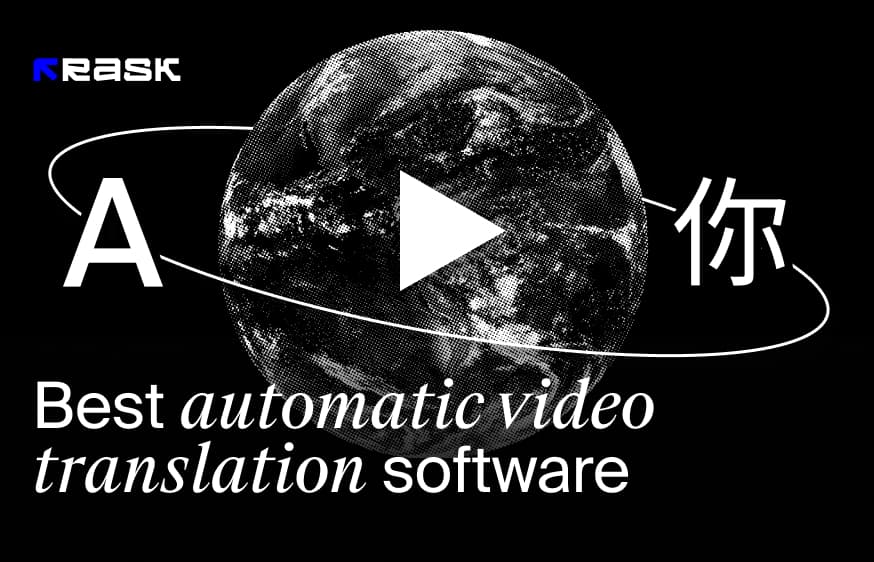
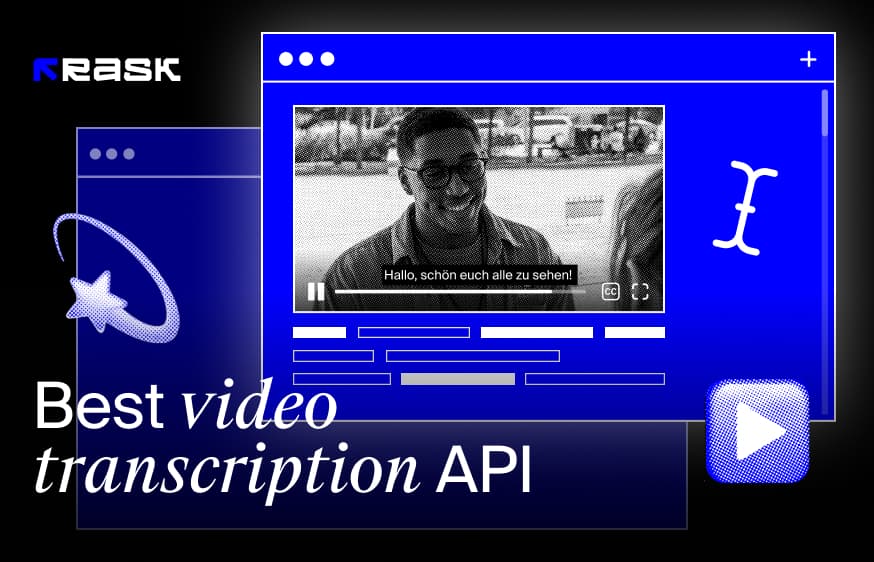
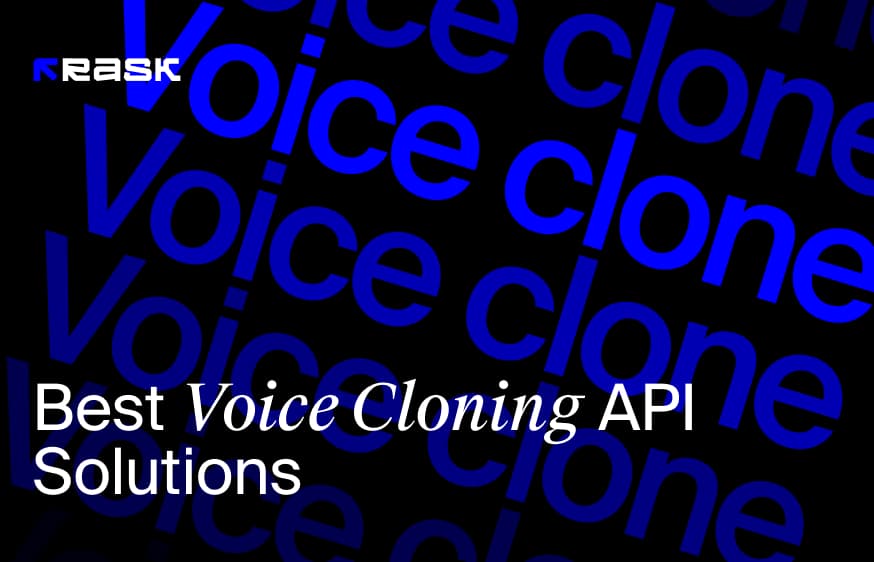
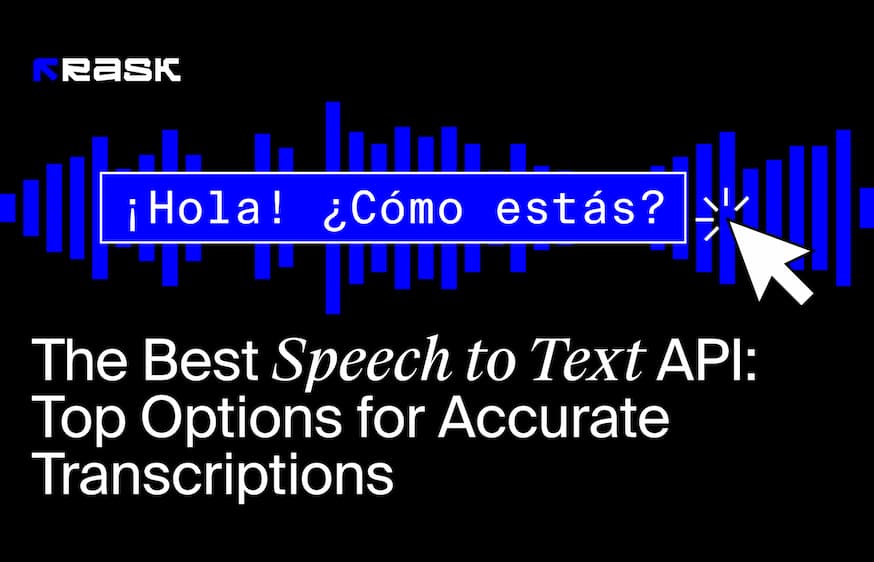

.jpg)
.webp)


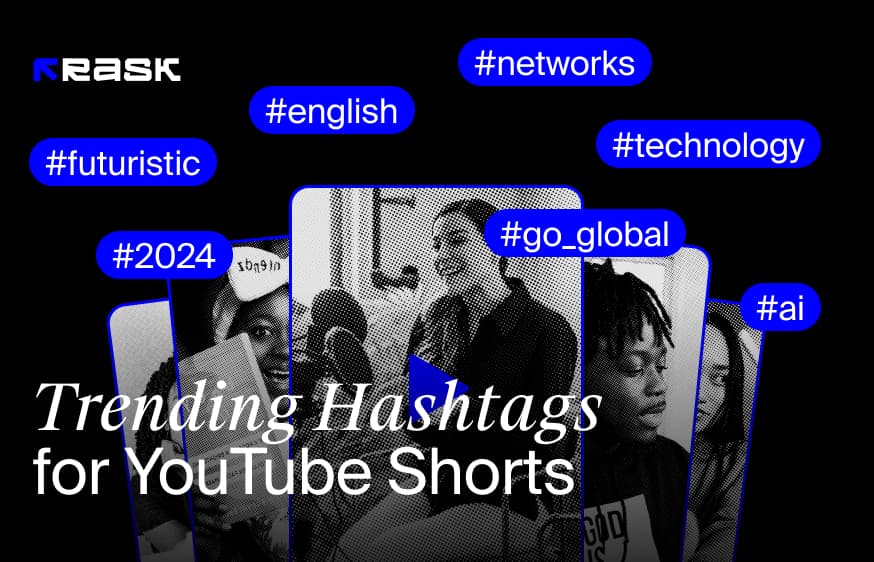
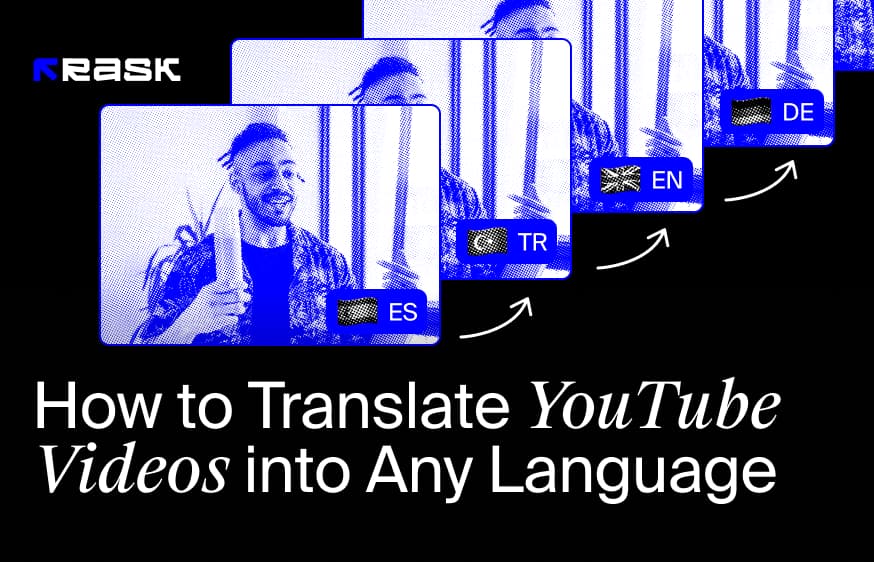
![8 Aplikasi Penerjemah Video Terbaik untuk Pembuat Konten [dari 2024]](https://rask.ai/cdn-cgi/image/width=960,format=auto,fit=scale-down/https://cdn.prod.website-files.com/63d41bc99674c403e4a7cef7/6668a3dcd3175bd1d1c73c81_Best%20video%20translator%20apps%20cover.webp)
![Perangkat Lunak Sulih Suara AI Terbaik untuk Pelokalan Video [tahun 2024]](https://rask.ai/cdn-cgi/image/width=960,format=auto,fit=scale-down/https://cdn.prod.website-files.com/63d41bc99674c403e4a7cef7/66685014f68137eb05c89c16_Cover.webp)

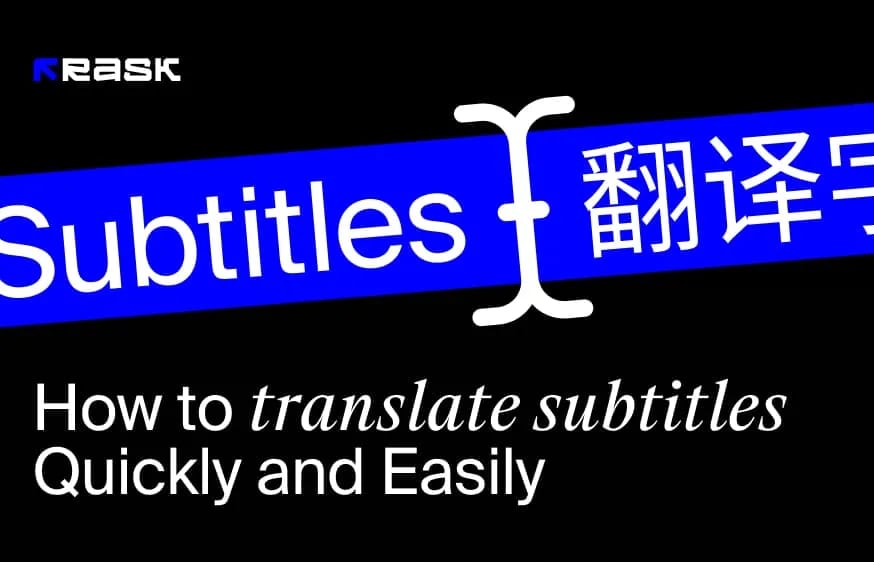
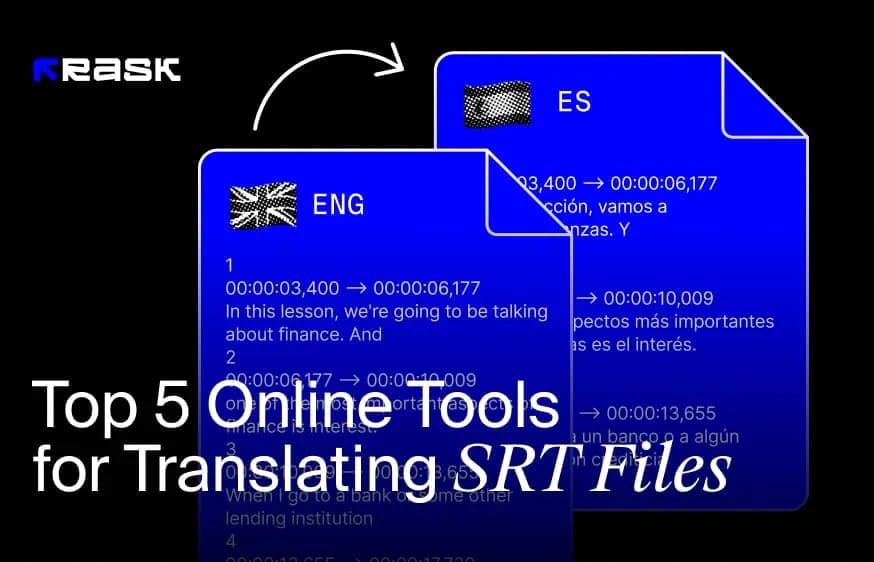

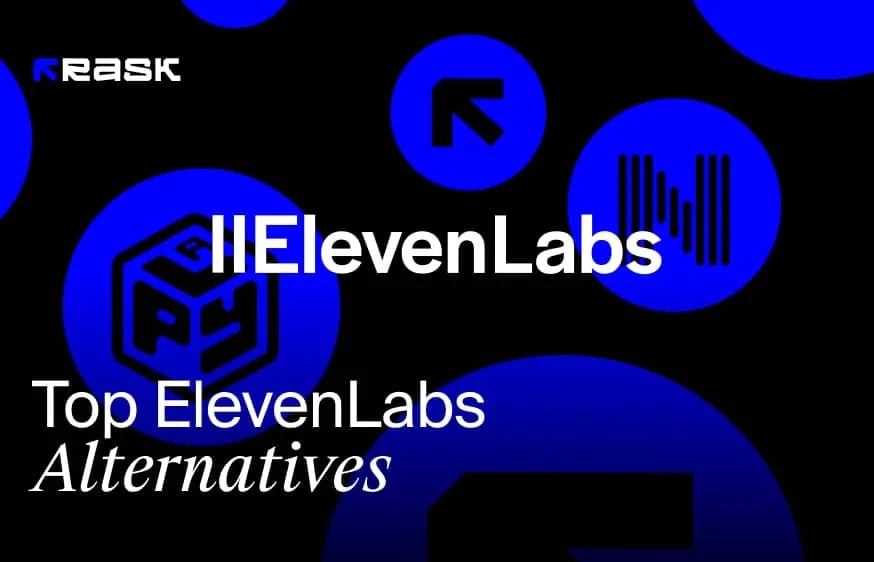
.webp)
